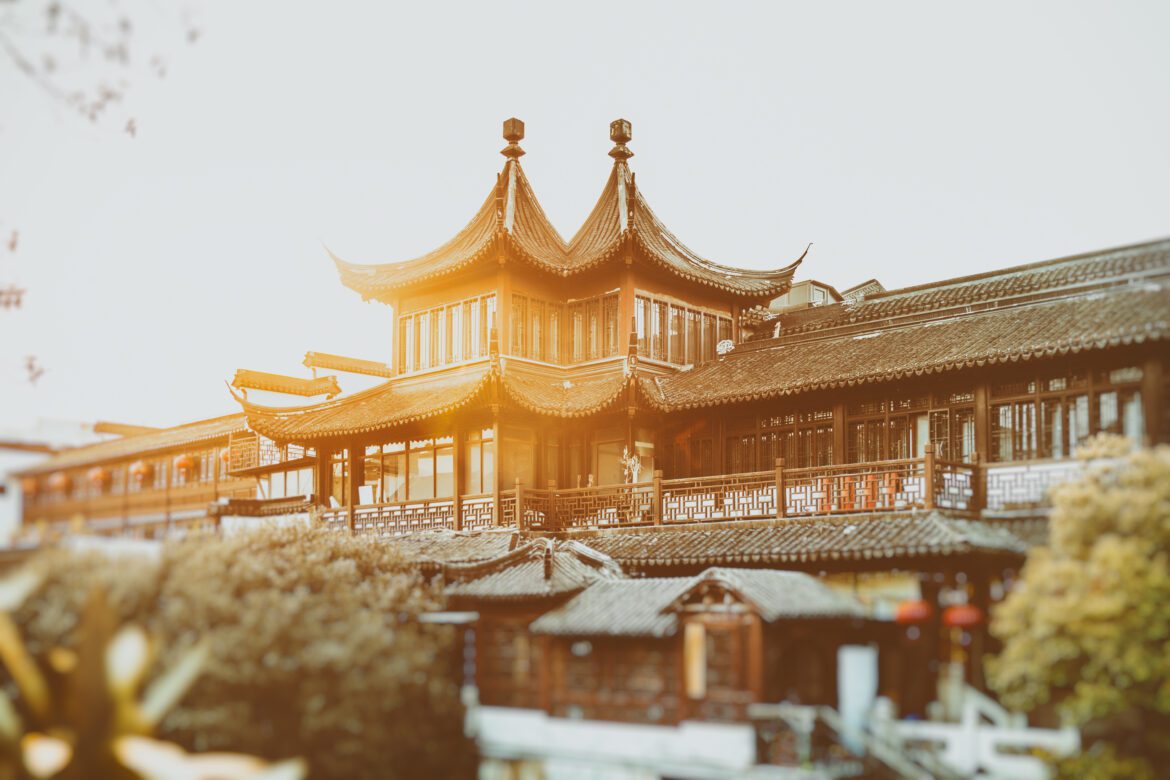With a rich history spanning thousands of years, China has produced some of the world’s most spectacular and significant masterpieces of art and architecture. Chinese art and architecture have been influenced by a wide spectrum of cultural, religious, and political forces from ancient dynasties to present times. In this book, we will go through China’s artistic and architectural wonders, examining the essential components that characterize its distinct aesthetic.
Ancient Chinese Art and Architecture:
Ancient China is famous for its magnificent architectural feats, many of which are still standing today. The Great Wall of China, a massive fortification that runs over 13,000 miles and was designed to protect the Chinese Empire from invasions, is one of the most recognizable examples. The Great Wall, built with stone, brick, and other materials, shows ancient Chinese civilizations’ extraordinary technical prowess.
Another outstanding architectural achievement is Beijing’s Forbidden City, which served as the imperial capital for multiple dynasties. The Forbidden City is a magnificent example of classic Chinese architecture, with its symmetrical plan, enormous halls, and elaborate adornment. The palace complex’s structures are decorated with colorful roofs, dragon designs, and traditional Chinese symbols that reflect the imperial strength and cultural significance of the ruling dynasties.
This period’s Chinese art is similarly enthralling, with a variety of shapes and styles that have left an unforgettable influence on the art world. Chinese calligraphy is a popular art form that is both a practical writing method and a highly expressive form of visual art. Graceful brushwork and a beautiful balance of lines and spaces distinguish calligraphy. It’s common in scrolls, paintings, and other decorative items.
Porcelain and other Chinese ceramics are likewise highly appreciated. Porcelain has a long and illustrious history in China, with its delicate forms and brilliant colors. Exquisite ceramics with elaborate patterns, landscape landscapes, and inventive motifs were produced during the Tang and Song dynasties. The blue and white porcelain method, which involves painting cobalt blue motifs on a white background, rose to prominence during the Ming and Qing dynasties.
Traditional Chinese Art and Architecture:
Traditional Chinese art and architecture continue to have a significant impact on modern Chinese aesthetics. The concept of harmony, which seeks a balance between nature, humanity, and the universe, is one of the major elements that underpin traditional Chinese art. This notion is demonstrated in classical Chinese gardens, which are deliberately built to produce a harmonious atmosphere that reflects nature’s beauty.
The Humble Administrator’s Garden in Suzhou, for example, is famed for its beautiful landscapes, peaceful ponds, and exquisite pavilions. To create a tranquil and scenic ambiance, the gardens frequently integrate materials such as rocks, plants, water features, and exquisite construction. These gardens have had a tremendous influence on landscape design throughout Asia and beyond.
The depiction of nature is another significant component of traditional Chinese painting. The ability of Chinese landscape painting, frequently done in ink and watercolor, to capture the essence of the natural environment is appreciated. Brushstrokes are used by artists to depict mountains, rivers, trees, and other natural aspects, emphasizing the spiritual connection that humans have with nature. The “Four Gentlemen” themes in Chinese painting – bamboo, orchid, chrysanthemum, and plum blossom — represent various virtues and seasons.
Contemporary Chinese Art and Architecture:
The rapid modernization and global impact of China have ushered in a new era of art and architecture. Contemporary Chinese artists and architects are developing new creations that represent the country’s dynamic and evolving society.
China is noted for its magnificent skylines and cutting-edge ideas in the field of architecture. Cities such as Shanghai and Beijing have futuristic buildings such as the Shanghai Tower and the CCTV Headquarters. These architectural marvels fuse traditional Chinese design features with modern aesthetics, merging sleek glass facades with symbolic forms inspired by Chinese culture.
Contemporary Chinese art is just as varied and diverse. Artists are experimenting with a variety of materials, ranging from conventional ink painting to multimedia works. Many contemporary Chinese artists remark on social, political, and environmental themes through their work, questioning conventions and connecting with global art trends. The Chinese art market has also grown significantly, with Chinese artists fetching high prices at international auctions and shows.
Exploring China’s Artistic Treasures:
China’s art and architecture provide an intriguing glimpse into the country’s rich cultural legacy and creative energy. The depth and diversity of China’s creative riches will captivate you whether you’re touring ancient temples, strolling through classical gardens, or immersing yourself in modern art galleries. China’s art and architecture continue to inspire and astonish people all over the world, from the grandeur of the Forbidden City to the delicate brushstrokes of a calligraphy masterpiece. So, set off on a journey around China’s cultural wonders to discover the beauty hidden within its ancient traditions and dynamic present.
Conclusion:
To summarize, China’s art and architecture are testaments to the country’s rich history, cultural heritage, and creative ability. China provides an intriguing blend of heritage and modernity, from the awe-inspiring historical landmarks such as the Great Wall and the Forbidden City to the serene beauty of classical gardens and the inventive designs of contemporary skyscrapers. Chinese art and architecture continue to captivate and inspire people all over the world with its complex details, significant motifs, and profound statements. Exploring China’s artistic treasures is a trip through time that reveals the beauty, craftsmanship, and artistic vision that have molded the country’s cultural identity for millennia.

